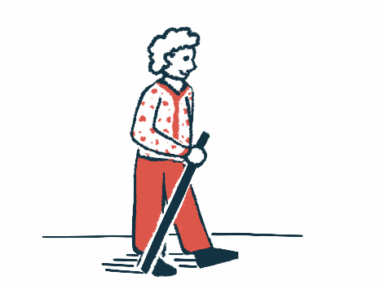I was skeptical of keeping an MG journal, until I found the right one
If journaling isn't up your alley, try getting creative
Written by |

Soon after I was diagnosed with myasthenia gravis (MG), my neurologist told me that keeping track of my symptoms could be an important factor in successfully treating it. She recommended I keep a daily journal.
She told me that MG is a snowflake disease: Just as no two snowflakes are the same, people’s experiences with MG are also different.
That was four years ago, and in the years since then, I’ve learned she was right. I now understand why people compare the disease to snowflakes.
I’ve also learned that no single method of journaling is best for all patients. I’d like to share how I reached this conclusion, but to do so, I’ll need to put on my history teacher hat for a moment and share details about a friend of mine.
To be the most useful, an MG journal, which should be updated regularly, should monitor eight main symptoms: difficulty talking, chewing, swallowing, brushing teeth, combing hair, and rising from a seat without assistance, as well as double vision and eyelid droop. Monitoring one’s symptoms only sporadically isn’t as effective as doing it regularly.
I purchased a decent and easy-to-use journal from Amazon. While the style of the journal might be a good fit for some, it didn’t work for me.
Next, I created a spreadsheet with those eight symptoms. For a few days, before going to bed, I’d sit at my desk and fill in the spreadsheet. But after a few days, it was clear that it wasn’t the answer I was looking for. I’d forget to fill it in and go to bed without recording my symptoms.
I pondered what to try next, but the available options simply didn’t work for me. The entire process seemed boring, so I just stopped keeping track of things. I found the process frustrating.
A history lesson
Then I remembered two of my favorite Americans. While they were once close friends, the relationship between Founding Fathers John Adams and Thomas Jefferson eventually soured due to politics. They didn’t speak to each other for 12 years. Then, in January 1812, Adams wrote Jefferson a letter, and the two renewed their friendship through a series of subsequent letters over the next several years.
These letters are a treasure trove of American history and include a great deal of philosophizing and political discussion. In them, the two men also describe the daily, mundane events in their lives.
As I thought about all of this, a lightbulb went on. Like Jefferson and Adams, I also have a decades-old friendship. I met this particular friend when we were both teenagers attending the same high school. Over the next 48 years, our friendship grew, despite the fact that we now live more than 1,500 miles apart. We still text each other almost every day.
Sometimes we discuss mundane things like the weather. Other times we might discuss philosophical topics such as what constitutes sin. We always share any of our current health issues. I usually begin or end an exchange with an update on my MG.
Without knowing it, I’ve developed a symptom journal tailored to my needs. I enjoy the daily text messages, which connect me to my hometown. Maintaining a relationship for nearly half a century is comforting and nourishing. Plus, I no longer need to add another task to my daily routine — I already have a symptom tracker in my friend!
If you haven’t found a symptom tracker that works for you, perhaps take a look at your life. Do you already document your symptoms in one way or another? Could daily texting be a solution for you, too? In addition to creating a symptom journal, this approach might also improve your personal relationship with that person.
Sometimes the solution to a problem is right in front of us. My realization that text messaging is my symptom journal is proof that we can miss the forest because of the trees. I hope this helps you more easily see the forest.
Note: Myasthenia Gravis News is strictly a news and information website about the disease. It does not provide medical advice, diagnosis, or treatment. This content is not intended to be a substitute for professional medical advice, diagnosis, or treatment. Always seek the advice of your physician or other qualified health provider with any questions you may have regarding a medical condition. Never disregard professional medical advice or delay in seeking it because of something you have read on this website. The opinions expressed in this column are not those of Myasthenia Gravis News or its parent company, Bionews, and are intended to spark discussion about issues pertaining to myasthenia gravis.







Glen Ackermann
The journal of MG symptoms sounds like a great idea. A phone app would probably work best because most of us keep a smart phone handy, even when meeting with our medical caregivers. It would be an easy way to show what you have experienced, how often and when. Now we just need some clever person with coding skills for smart phones and the desire to help/ slash make a little money to come help us!
Brinda
I have a hard time seeing to write things , if I use the computer I have to shut one eye and can only do that for a short time its a strain on my eye , even if I patch it ,I take off the patch and my vision is so double and I get so headache